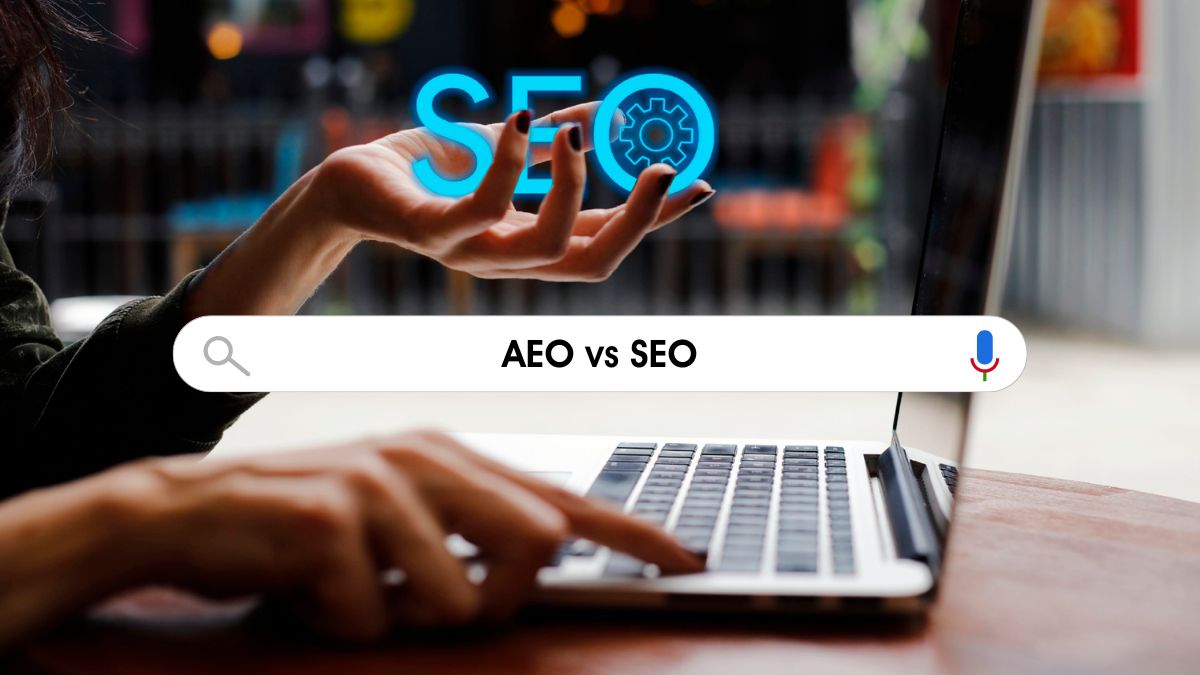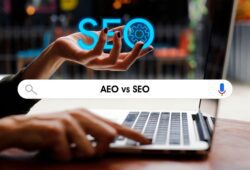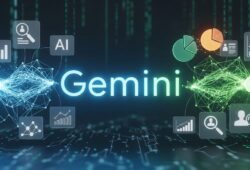
What is AEO and how is it different from SEO? The rise of language models like ChatGPT (OpenAI), Perplexity, Bing Copilot, or Gemini and Google’s SGE (Search Generative Experience) is transforming user search habits. Instead of classic link-based results, LLMs (Large Language Models) now deliver directly generated answers, supported by multiple sources.
This new environment has given rise to an emerging approach: Answer Engine Optimization (AEO), an evolution of traditional SEO that aims to maximize a website’s visibility in AI-based answer engines. The goal is no longer just to appear in results, but to be cited in the answer.
ALSO READ. Who Is the Alleged Suspect in the Murder of Charlie Kirk? Here’s What We Know
How is AEO different from traditional SEO?
While both share the goal of ranking organic content, AEO and SEO differ in the type of engine, output format, and prioritized signals. The following table summarizes their key differences:
| Aspect | SEO (Search Engine Optimization) | AEO (Answer Engine Optimization) |
|---|---|---|
| Target engine | Google, Bing (classic SERPs) | ChatGPT, Perplexity, SGE, LLM engines |
| Output format | List of links (10 blue links, snippets) | AI-generated text with possible citations |
| User interaction | Clicks, browsing, reading | Conversation, summary, click-free queries |
| Key signals | Backlinks, CTR, Core Web Vitals, authority | Clarity, factual accuracy, structure, E-E-A-T |
| Key metric | Ranking, clicks, organic traffic | Citations, answer visibility, referral traffic |
| Primary intent | Navigational, transactional | Informational, explanatory, discovery |
What do SEO and AEO have in common?
Despite their differences, both approaches share technical and strategic pillars. Some important similarities:
- Content quality: both reward reliable, up-to-date, and useful content.
- Topical authority (E-E-A-T): having experience, authority, and trust remains essential.
- Use of structured data (Schema.org): engines, whether classic or AI-based, extract information better when well-tagged.
- Page speed and structure: even if LLMs don’t access pages in real time, the engines feeding them do consider these metrics.
This means that an AEO strategy doesn’t replace SEO, but rather complements and extends it into new search and content consumption interfaces.
How can you know if your content is being cited by an LLM?
One challenge with AEO is that AI engines don’t always disclose their sources. Still, you can detect signs of visibility through:
- Tools like Perplexity.ai, which do show direct links to sources used.
- Analyzing referral traffic in GA4 from domains like:
perplexity.aichat.openai.compoe.comyou.com
- Running test prompts in ChatGPT Plus, Bing Copilot, or Gemini to see if your content appears (even without a direct link).
- Checking user feedback or forms (“How did you find us?”) where they mention seeing your brand on “an AI.”
What specific tactics help optimize content for AEO?
Unlike SEO, where ranking depends on many external factors like backlinks, AEO relies on the immediate quality and utility of the information. Here are some key tactics:
1. Entity-first content
LLMs respond better to texts that clearly introduce the topic from the start. Avoid beating around the bush and answer directly:
- Define concepts in the first paragraph.
- Use clear, concise sentences.
- Include verifiable data.
Example of optimized writing:
❌ “In recent years, many people have wondered…”
✅ “SEO (Search Engine Optimization) is the process of improving visibility…”
2. Strategic FAQs
Frequently asked questions are a goldmine for AI engines. Use question-based headers (H2) and answer with 50–120 word paragraphs.
Include questions like:
- What is [term]?
- What is it used for?
- How does it compare to [another term]?
3. Structured data (Schema.org)
Implement tags such as:
FAQPageHowToProductOrganizationArticleBreadcrumbList
This not only helps SEO, but also allows engines to extract “pre-formatted” information useful for generated answers.
4. Trustworthy content with citations
Engines favor content that:
- Is signed by authors with visible credentials.
- Includes references to official sources.
- Displays a last updated date.
These elements reinforce the content’s Trust, a key factor in E-E-A-T.
5. Canonical answer blocks
Include an introductory paragraph that acts as a “direct answer” at the start of the article or section. This aligns with both SEO and AEO best practices.
Example:
What is AEO?
AEO or Answer Engine Optimization is a content strategy aimed at improving a website’s visibility in answer engines like ChatGPT or Perplexity, optimizing clear, direct, and structured responses to be cited by AI language models.
6. Evergreen content optimized for AI
Prioritize:
- Conceptual definitions (glossaries, what is, how it works).
- Comparisons (vs).
- Step-by-step guides (how-to).
- Reliable legal, technical, or financial content.
How can you combine AEO and SEO into a single strategy?
It’s not about choosing one or the other. The smartest strategy today is to align content efforts that serve both traditional search engines and generative AI engines.
Example:
- A guide on “How to choose a project management software” can rank as a Google snippet (SEO) and be cited as a source in ChatGPT (AEO).
- Use a hybrid structure: hierarchical headers, short paragraphs, FAQs, comparison tables, and cited sources.
In addition, AEO can help you gain visibility in zero-click searches, which are becoming increasingly common.
What type of content is most likely to appear in AI responses?
According to a study by Amsive and practical experience with tools like Perplexity, the following page types are most attractive to LLMs:
- Definition pages (“What is…?”)
- Return/shipping policies (clear and detailed)
- Product comparisons
- Well-documented technical content
- High-volume FAQ pages
- Articles with statistics or tables
If you’re building an evergreen content base, these areas are a priority for AEO.
As conversational engines grow and models like Gemini (Google), Claude (Anthropic), or Meta Llama expand, interactions based on AI are expected to grow exponentially. This means AEO will become increasingly relevant, especially in early funnel stages (discovery, awareness).
SEO will remain the main source of traffic for many years, but AEO represents a strategic extension that can position a brand as an authority not only in search engines, but also in new generative query spaces.
👉 Follow us on Google News.









